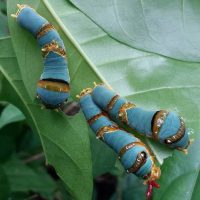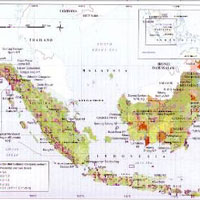Arthropods of the Forest: Spiders
Ibu Evi, coordinator of the Pondok Dua nursery facility and caregiver for many of the young orangutans at the OFI Care Center, is an exceptional photographer of some of the… Continue reading Arthropods of the Forest: Spiders
Insects of the Bornean Rainforest Part 1: Caterpillars
If you spend ten minutes in the forests of Borneo, you might not see the thousands of insects that surround you, but you will hear them. Life bursts from every… Continue reading Insects of the Bornean Rainforest Part 1: Caterpillars
What are Carbon Offset Schemes?
In the midst of an escalating global climate crisis, many people and corporations are looking for ways to reduce their own carbon footprint. One means of doing this is through… Continue reading What are Carbon Offset Schemes?
Orangutan Genome (part 2): Unexpected Genetic Diversity
Planet earth is currently home to seven billion people . In comparison, the approximately 60,000 orangutans remaining in the wild represent an exceedingly small number. Despite this 140,000-fold difference in current population size, analysis of the orangutan genome yields a surprising discovery: orangutans are much more genetically diverse than humans.
Orangutan genome (part 1): The quest for Leakey’s ancestral great ape
Louis Leakey was a Kenyan paleoanthropologist who devoted his life to uncovering the early phases of human evolution. Using the scientific tools available at the time, he set out to… Continue reading Orangutan genome (part 1): The quest for Leakey’s ancestral great ape
What Makes Orangutans Intelligent
Numerous studies in the wild and in captivity indicate that the great apes, chimpanzees, gorillas, and orangutans, are among the smartest land animals on the planet. The question is why… Continue reading What Makes Orangutans Intelligent
Orangutan Natural History and Socioecology
Orangutans are the only great ape outside of Africa and they are uniquely adapted to the tropical forests of Southeast Asia. During the Pleistocene, orangutans ranged throughout forests in Java, Sumatra, Borneo, Vietnam and southern China. As climate slowly changed over nearly 1.8 million years, the orangutan range shifted southward. Orangutan populations have declined dramatically, perhaps by as much as 97%, in the 20th century
Analyzing Hydrology in Tanjung Puting’s Peat Swamp Forests
It may seem strange to think of tropical forests and swamps together… but not to orangutans who call peat swamp forests home. The flooded river networks of Tanjung Puting National Park and Lamandau Reserve are key components of forest ecology. Without them, forests and fruit would be distributed differently, and so would orangutans and other species dependent on these unique ecosystem.
Climate, Forest Ecology and Orangutans
Indonesia consists of approximately 17,000 islands, interspersed with warm seas, strung out along the equator between mainland Asia and Australia. Indonesia’s wet tropical climate is characterized by seasonal changes in rainfall rather than temperature. Warm waters, which make up more than 80% of Indonesia, are responsible for the almost constant temperatures on land. Seasonal variation in Indonesia’s
Preserving Peatland Rainforest Saves Orangutans… and the Global Climate
Most rainforests in Borneo and Sumatra, home to the orangutan, are distributed on peatlands which are typically low, swampy areas that are seasonally flooded. These rainforests are like no others… Continue reading Preserving Peatland Rainforest Saves Orangutans… and the Global Climate











